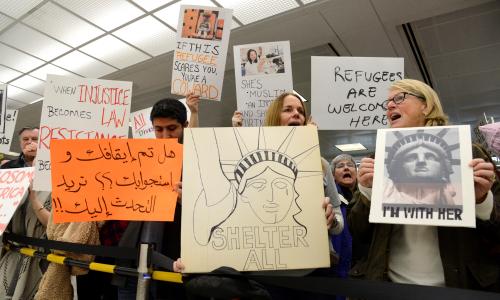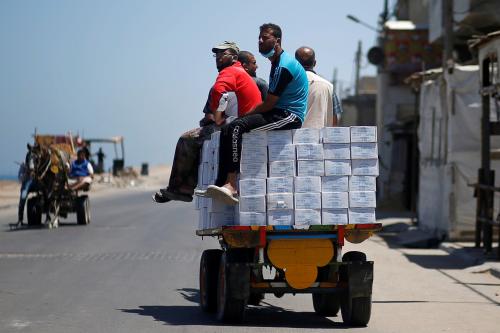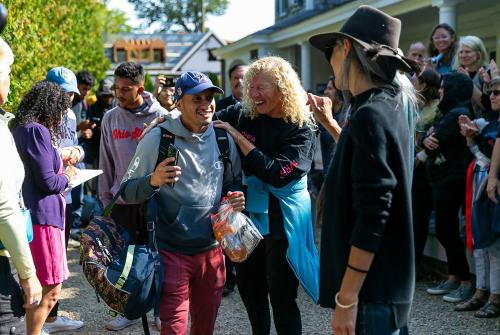The Supreme Court partially reinstated President Trump’s travel ban on Monday, lifting lower court injunctions on a temporary and selective basis, which permits the application of restrictions to “foreign nationals who lack any bona fide relationship with a person or entity in the United States.” Last night, the State Department issued new guidelines on how the limited ban should be applied. At 8 p.m. Eastern this evening, enforcement of those guidelines will begin.
At first glance, the decision appears to impose the greatest hardship on refugees. Said a litigation attorney at National Immigrant Justice Center: “Refugee applicants are the group that will really be harmed in this situation.”
The uncertainties at play are many, and it is too early to tell how the decision will affect refugee resettlement in practice. Yet there are at least three reasons to believe its impact may not be as dire as some worst-case predictions.
First, individuals connected to U.S. entities will not be subject to the ban during the Supreme Court’s review. This could have wide applicability for refugees, since those approved for resettlement in the United States are paired with one of nine voluntary agencies, often well before arrival. Advocates, including the ACLU and the U.S. Committee for Refugees and Immigrants, are poised to argue that this relationship qualifies as “bona fide.”
The Court’s opinion makes clear that the connection must be “formed in the ordinary course,” not for the purpose of getting around the ban. But there’s a case to be made—and advocates lined up to make it—that refugees’ ties to resettlement agencies are valid. The matter is likely to be extensively litigated over the summer (a concern the Court’s most conservative justices highlighted in their partial dissent).
Second, there’s the matter of family connections. According to some estimates, approximately two thirds of refugees who are resettled in the United States have family already here. Many of them can make a case that they are not subject to the limited ban that the Court has permitted during this interim period. The Court requires family ties to be “close,” but does not specify precisely which relationships are covered. The administration put forward its criteria last night: “a parent (including parent-in-law), spouse, child, adult son or daughter, son-in-law, daughter-in-law, sibling, whether whole or half. This includes step relationships.” That interpretation is likely to be litigated in the months to come, with rights groups arguing for a more expansive one.
Third, there’s the 50,000-person cap on refugee admissions that President Trump sought to impose. That component of his executive order—among its most problematic—may not be used to exclude an individual who would otherwise qualify for entry by means of connection to the United States.
Ultimately, much depends on how the administration implements the Court’s opinion and the outcome of likely legal challenges. But there are good reasons to believe that a substantial number of refugees do come to the United States with “bona fide” ties—and that rights organizations are prepared to make a case on their behalf.
The Brookings Institution is committed to quality, independence, and impact.
We are supported by a diverse array of funders. In line with our values and policies, each Brookings publication represents the sole views of its author(s).








Commentary
What the partially-reinstated travel ban means for refugees
June 29, 2017